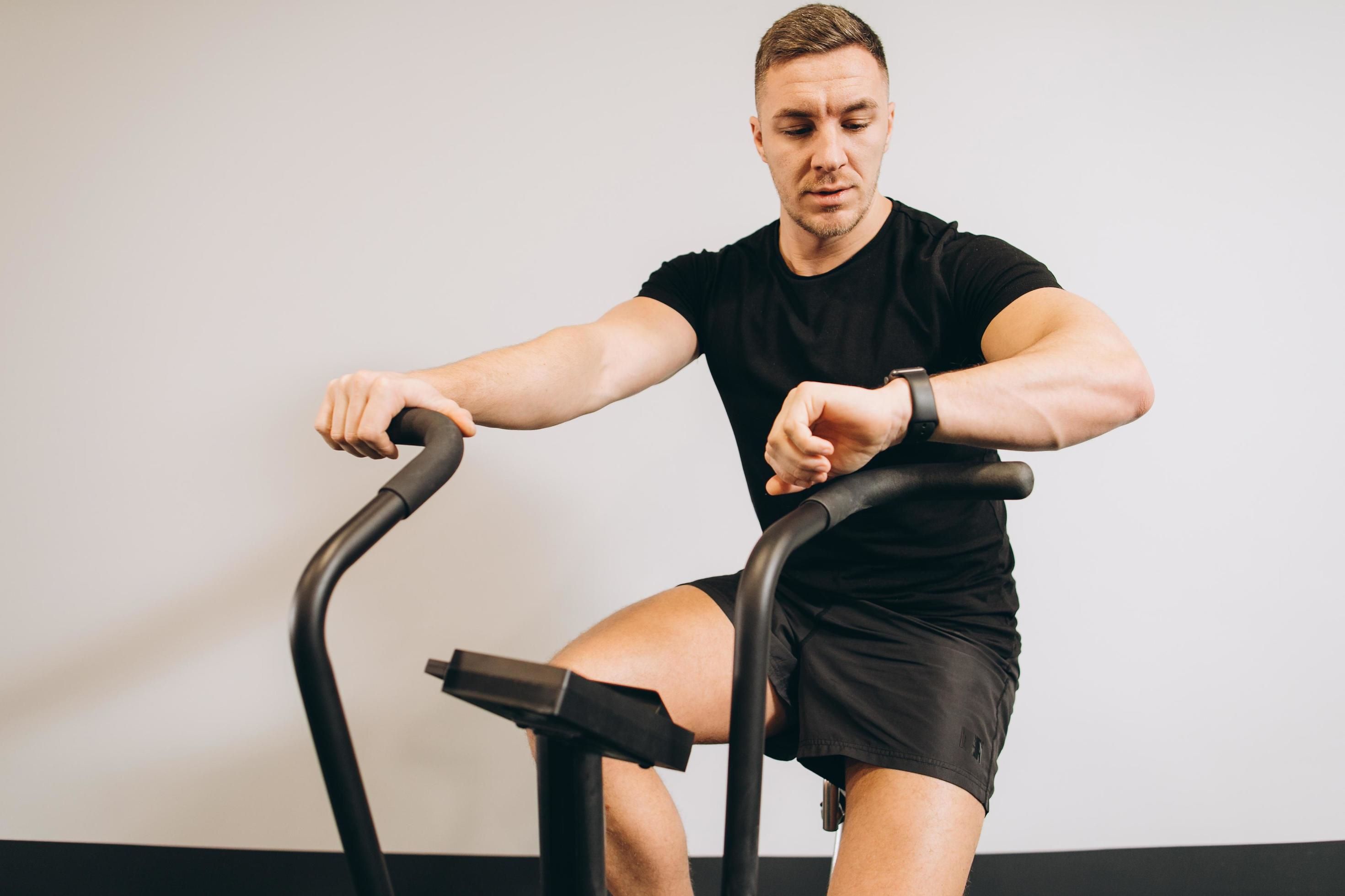Home>Misc>Featured>How To Meet The FITT Requirements For Cardiorespiratory Endurance?


Featured
How To Meet The FITT Requirements For Cardiorespiratory Endurance?
Modified: January 22, 2024
Improve your cardiorespiratory endurance with our featured example that meets all FITT requirements. Choose the best option for optimal fitness results.
Introduction
Cardiorespiratory endurance is an essential component of overall fitness. It refers to the ability of the heart, lungs, and circulatory system to supply oxygen and nutrients to the muscles during prolonged physical activity. Improving cardiorespiratory endurance can lead to numerous health benefits, including increased energy levels, enhanced cardiovascular function, and improved overall well-being.
When designing an exercise program to improve cardiorespiratory endurance, it is important to consider the FITT principle, which stands for Frequency, Intensity, Time, and Type. The FITT principle provides a framework for creating an effective and balanced cardiorespiratory endurance regimen.
In this article, we will explore various examples that best meet the FITT requirements for improving cardiorespiratory endurance. Each example will highlight a different type of exercise, showcasing how it can be modified to meet the specific FITT criteria.
By understanding these examples, you will be able to choose activities that align with your preferences and fitness goals, allowing you to create an exercise routine tailored to your specific needs.
FITT Requirements for Cardiorespiratory Endurance
Before diving into the specific examples, let’s take a closer look at the FITT requirements for cardiorespiratory endurance. Understanding these criteria will help you tailor your workouts to optimize the benefits of your exercise routine.
1. Frequency: The frequency refers to how often you engage in cardiovascular exercise. For optimal improvements in cardiorespiratory endurance, it is recommended to engage in aerobic activities at least three to five times per week.
2. Intensity: The intensity of your workouts determines how hard your heart and lungs have to work. It is important to find a balance between pushing yourself and keeping within a safe range. A good rule of thumb is to aim for a moderate to vigorous intensity level, where you can still hold a conversation but feel a noticeable increase in breathing and heart rate.
3. Time: The duration of your cardio workouts plays a crucial role. It is recommended to aim for at least 150 minutes of moderate-intensity or 75 minutes of vigorous-intensity aerobic activity each week. However, if you are just starting or have limitations, you can begin with shorter durations and gradually increase as your fitness level improves.
4. Type: The type of exercise you choose can greatly impact your cardiorespiratory endurance. It is essential to engage in activities that elevate your heart rate and challenge your cardiovascular system. Examples of aerobic exercises include running, swimming, cycling, dancing, rowing, and brisk walking.
By adhering to these FITT principles, you can create an exercise routine that effectively improves your cardiorespiratory endurance and helps you reach your fitness goals.
Example 1: Running
Running is a popular and accessible form of aerobic exercise that can greatly improve cardiorespiratory endurance. It is a versatile activity that can be modified to meet the FITT requirements.
Frequency: Aim to incorporate running into your workout routine three to five times per week. You can start with shorter distances and gradually increase the frequency as your fitness level improves.
Intensity: Adjust the intensity of your runs to challenge your cardiovascular system. You can vary the intensity by incorporating interval training, where you alternate between periods of moderate-paced jogging and faster-paced running. This helps elevate the heart rate and improves cardiovascular fitness.
Time: Begin with shorter runs and gradually increase your running duration over time. Aim for a minimum of 20-30 minutes per session, building up to a goal of 45-60 minutes as your endurance increases.
Type: Running can be done outdoors or on a treadmill, and it can be customized to suit your preferences. You can choose different terrains or include hills to engage different muscle groups and intensify the workout.
Remember to warm up before starting your run and cool down afterward to prevent injuries and aid recovery. It is also important to listen to your body and take rest days when needed to avoid overexertion.
By incorporating running into your fitness routine and modifying it to meet the FITT requirements, you can significantly improve your cardiorespiratory endurance and enjoy the numerous health benefits that come with it.
Example 2: Cycling
Cycling is a low-impact form of cardiovascular exercise that can improve cardiorespiratory endurance while being gentle on the joints. It is a versatile activity that can be adapted to meet the FITT requirements.
Frequency: Aim to incorporate cycling into your weekly routine three to five times. You can start with shorter rides and gradually increase the frequency as your fitness level improves.
Intensity: Adjust the intensity of your cycling workouts by varying your speed and resistance. Incorporate hill climbs or interval training to challenge your cardiovascular system and improve endurance.
Time: Begin with shorter rides, aiming for a minimum of 30 minutes per session. Gradually increase the duration to 45-60 minutes or longer as your cardiovascular fitness improves.
Type: Cycling can be done outdoors on a road bike or indoors on a stationary bike. Both options offer different benefits, and you can choose based on your preferences and accessibility. Outdoor cycling provides the advantage of fresh air and changing scenery, while indoor cycling allows for greater control over resistance and intensity.
Remember to properly adjust your bike to ensure a comfortable and safe riding position. Additionally, don’t forget to warm up before starting your ride and cool down afterward to prevent muscle stiffness and aid recovery.
Cycling not only strengthens your cardiovascular system but also works your lower body muscles, making it a great overall workout. By incorporating cycling into your fitness routine and adapting it to meet the FITT requirements, you can improve your cardiorespiratory endurance and enjoy the benefits of this enjoyable and accessible exercise.
Example 3: Swimming
Swimming is a fantastic full-body aerobic exercise that can greatly improve cardiorespiratory endurance. It is a low-impact activity that provides resistance, making it suitable for people of all fitness levels and ages.
Frequency: Aim to incorporate swimming into your workout routine three to five times per week. Start with shorter sessions and gradually increase the frequency as you build your swimming endurance.
Intensity: Adjust the intensity of your swimming workouts by varying your speed and incorporating different strokes. You can choose to swim at a steady pace or increase the intensity by incorporating intervals of faster swimming or adding resistance with the use of fins or a kickboard.
Time: Begin with shorter swim sessions, aiming for at least 20-30 minutes per session. Gradually increase the duration as your swimming stamina improves, working towards 45-60 minute swim workouts.
Type: Swimming offers a variety of strokes to choose from, including freestyle, backstroke, breaststroke, and butterfly. You can mix up the strokes during your workout to engage different muscle groups and prevent boredom. If you are a beginner, focus on mastering the fundamentals of a particular stroke before exploring others.
Remember to warm up before starting your swim and cool down afterward. Take breaks whenever necessary and listen to your body to prevent overexertion. Additionally, swimming in a properly maintained pool or in open water with a lifeguard on duty is crucial for safety.
Swimming is not only a great cardiovascular workout but also helps to improve strength, flexibility, and overall endurance. By incorporating swimming into your fitness routine and adapting it to meet the FITT requirements, you can greatly enhance your cardiorespiratory endurance and enjoy the many benefits that swimming has to offer.
Example 4: High-Intensity Interval Training (HIIT)
High-Intensity Interval Training, or HIIT, is a popular and effective form of cardiorespiratory training that combines short bursts of intense exercise with periods of rest or lower-intensity activity. HIIT workouts are known to be time-efficient and highly effective at improving cardiovascular fitness.
Frequency: Aim to incorporate HIIT workouts into your routine two to three times per week. The high-intensity nature of these workouts requires proper recovery, so it’s important to allow for rest days in between sessions.
Intensity: HIIT workouts involve pushing yourself to an intense level during the high-intensity intervals. This can be achieved through exercises such as sprints, burpees, jump squats, or kettlebell swings. The key is to perform the exercises at maximum effort, challenging your cardiovascular system to adapt and improve.
Time: HIIT workouts are typically shorter in duration compared to steady-state cardio workouts. A typical HIIT session may last anywhere from 10 to 30 minutes, including warm-up and cool-down periods. The focus is on maximizing effort during the high-intensity intervals rather than prolonging the duration of the workout.
Type: HIIT workouts can take various forms, including circuit training, Tabata intervals, or pyramid sets. You can choose exercises that target multiple muscle groups and incorporate both cardio and strength components.
It is important to warm up properly before starting a HIIT workout to prepare your muscles and joints for the intense exertion. Additionally, listen to your body and modify the exercises or rest periods if needed to prevent injury or excessive fatigue.
HIIT workouts are an excellent way to boost cardiorespiratory endurance, burn calories, and improve overall fitness. By incorporating HIIT into your exercise routine and adjusting the intensity, duration, and exercises to meet the FITT requirements, you can effectively enhance your cardiovascular performance and reach your fitness goals.
Example 5: Rowing
Rowing is a total-body cardiovascular exercise that can significantly improve cardiorespiratory endurance. It is a low-impact activity that not only targets the muscles of the upper and lower body but also engages the core muscles.
Frequency: Aim to incorporate rowing into your workout routine two to three times per week. As rowing engages multiple muscle groups, it is important to allow for proper recovery between sessions.
Intensity: Adjust the intensity of your rowing workouts by adjusting the resistance level on the rowing machine or rowing harder and faster. The goal is to maintain a challenging pace that elevates your heart rate and increases your breathing rate.
Time: Begin with shorter sessions, aiming for at least 20-30 minutes per workout. Over time, gradually increase the duration to 45-60 minutes to maximize your cardiovascular endurance.
Type: Rowing can be done using a rowing machine or on the water in a rowing boat. Both options provide an excellent cardiovascular workout. If you choose to row on the water, be sure to receive proper instruction and adhere to safety guidelines.
Proper form and technique are key in rowing, so take the time to learn the correct rowing technique to optimize the workout and prevent injuries. Additionally, warming up before rowing and incorporating stretches to target the muscles involved in rowing can help improve flexibility and prevent muscle imbalances.
Rowing is a highly effective exercise for improving cardiorespiratory endurance, building strength, and enhancing overall fitness. By incorporating rowing into your fitness routine and modifying it to meet the FITT requirements, you can experience impressive improvements in your cardiovascular performance and enjoy the benefits of this full-body workout.
Conclusion
Improving cardiorespiratory endurance is crucial for overall fitness and health. By incorporating regular cardiovascular exercise into your routine, you can enhance your body’s ability to efficiently deliver oxygen and nutrients to the muscles, improving endurance and overall well-being.
In this article, we explored various examples that best meet the FITT requirements for cardiorespiratory endurance. Running, cycling, swimming, high-intensity interval training (HIIT), and rowing are all excellent options that can be adapted to meet your specific fitness goals and preferences.
Through the FITT principles of frequency, intensity, time, and type, you can design an exercise regimen that optimally improves cardiorespiratory endurance. Remember to gradually increase the frequency and duration of your workouts, adjust the intensity based on your fitness level, and choose activities that elevate your heart rate and challenge your cardiovascular system.
Each example offers unique benefits and variations that can be incorporated into your routine to keep it engaging and effective. Whether you prefer the versatility of running, the low-impact nature of swimming, or the high-intensity intervals of HIIT, there is an option that will suit your preferences and fitness level.
Always listen to your body and consult with a healthcare professional before beginning any new exercise program, especially if you have any pre-existing health conditions or concerns.
By incorporating the FITT principles and exploring different examples, you can improve your cardiorespiratory endurance, boost your overall fitness, and enjoy the countless benefits of a healthy and active lifestyle.









